Opportunities and Challenges
Technological Accessibility
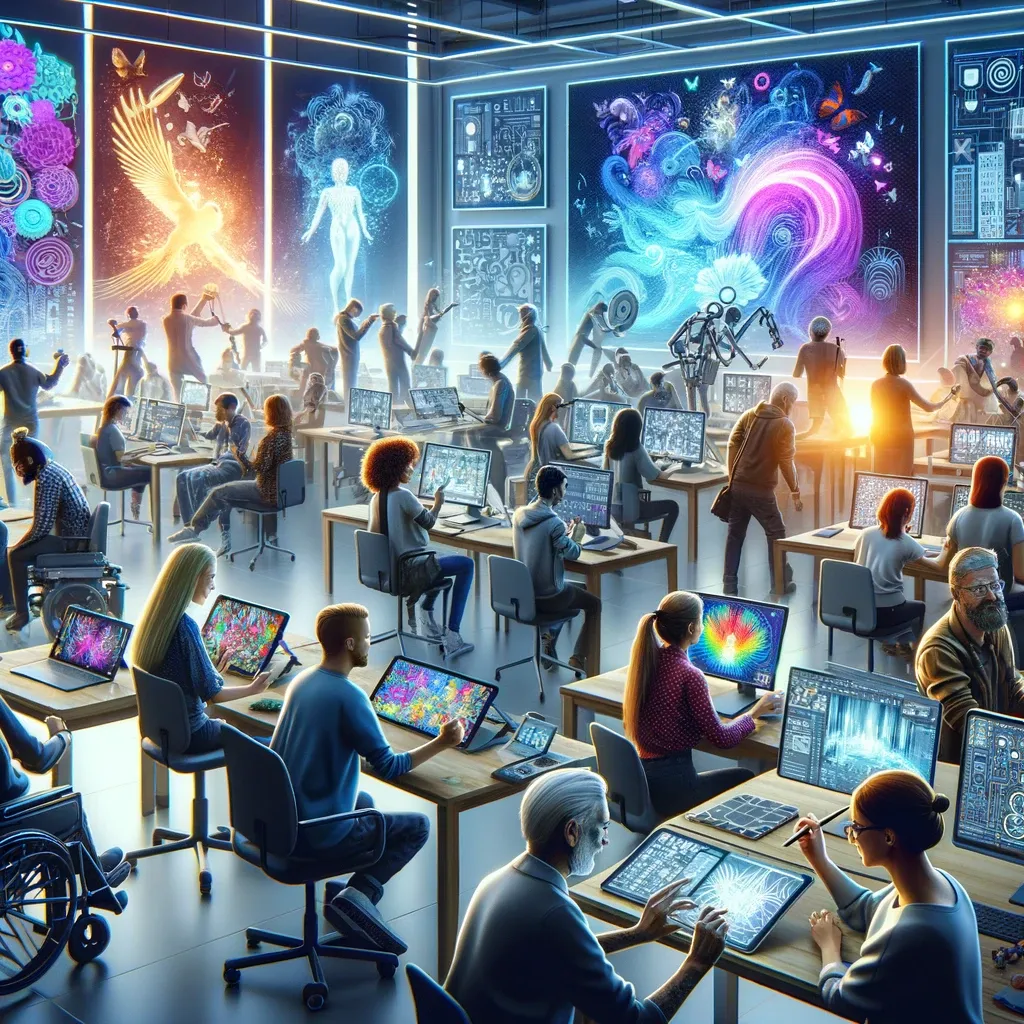 by [dall-e]
by [dall-e]
Models for generating art, music, and text are becoming more ubiquitous. People who were once unable to engage in art due to a lack of resources or technical skill can now express themselves freely. Existing artists are using tools to work more efficiently; for instance, filmmakers are utilizing MidJourney to create storyboards, and graphic designers are leveraging DALL·E to generate initial concepts quickly. This increased accessibility of creative tools blurs the lines between professional artists and hobbyists, expanding the art world to include a diverse array of voices and perspectives.
Artistic Identity and Value
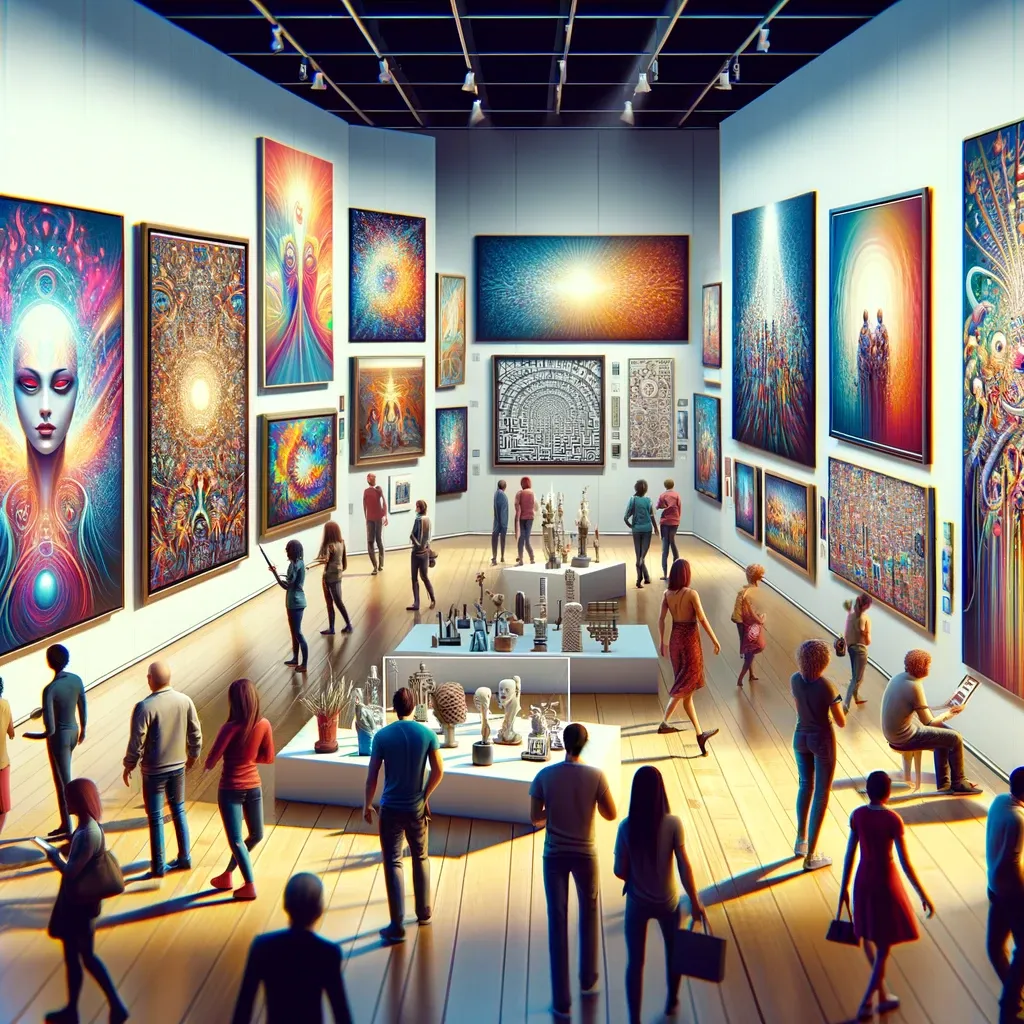 by [dall-e]
by [dall-e]
With some training and access to these tools, any individual creator can guide an AI to produce art, making everyone a potential artist. This shift will significantly impact the traditional art world, where an artist’s persona often influences the perceived value of their work. In the future, the value will lie in the art itself, rather than the persona or fame of the artist, challenging conventional notions of authorship and artistic merit.
Economic Implications
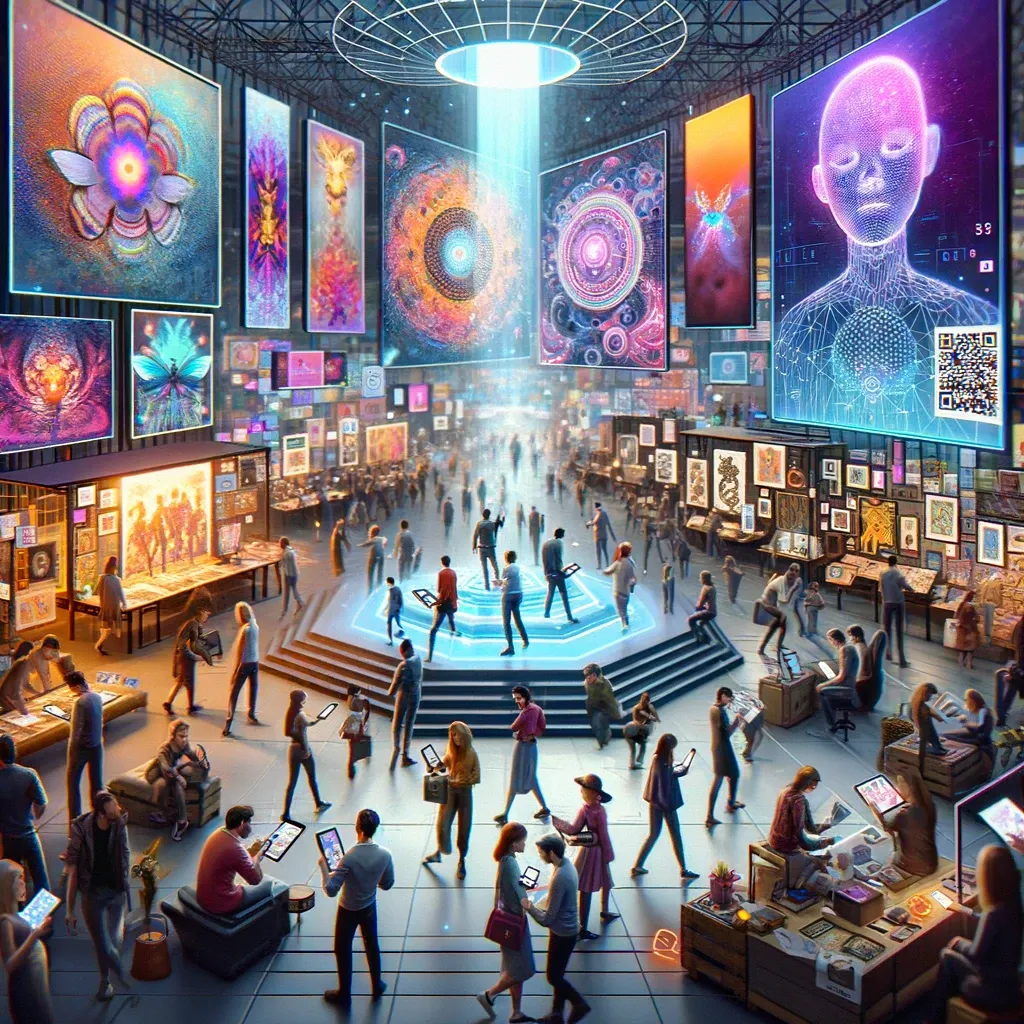 by [dall-e]
by [dall-e]
As more people create art in line with their aesthetic preferences, fewer will buy traditionally made art. The proliferation of AI-generated art will disrupt the art world, with collectors and celebrity artists finding that their works no longer command the same prices as in the past. This economic shift may lead to new models of art ownership and distribution, emphasizing digital platforms and decentralized markets.
Creative Process and Collaboration
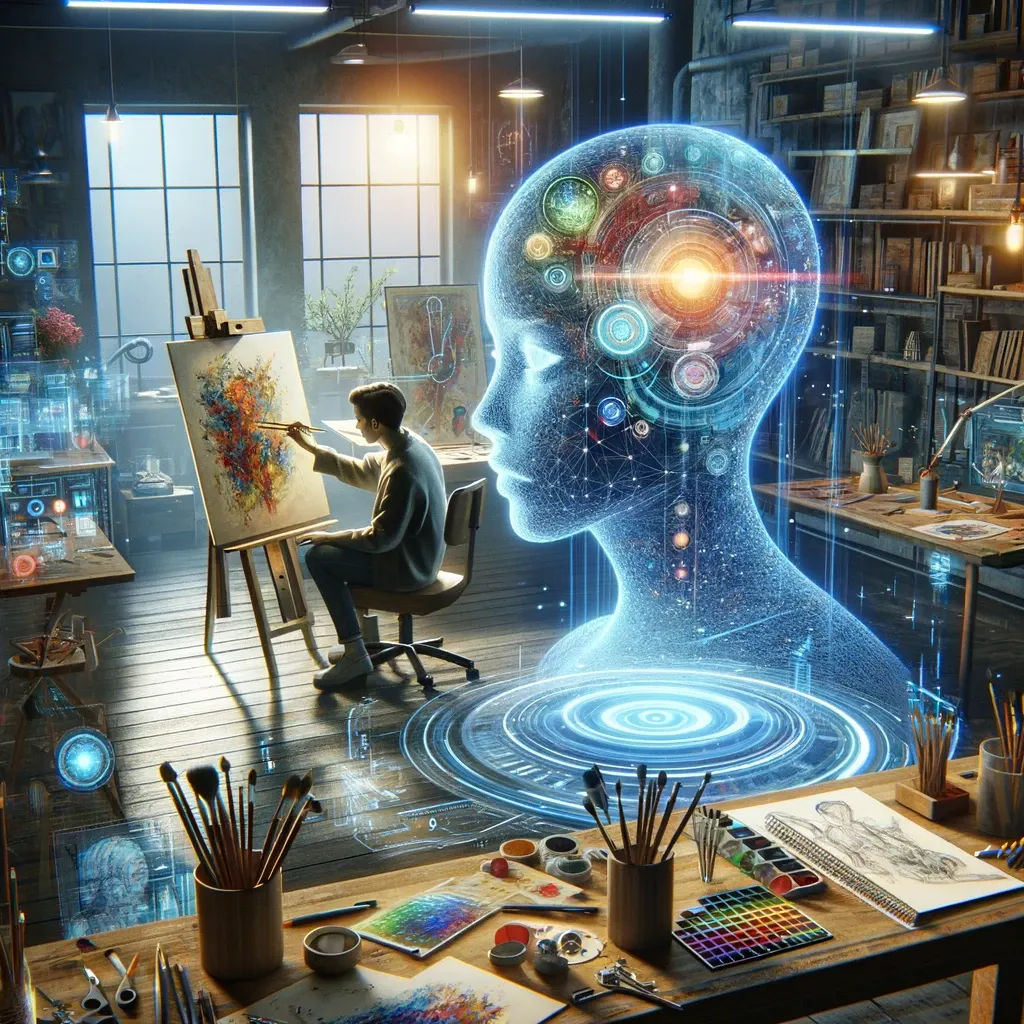 by [dall-e]
by [dall-e]
Artists must strive to produce engaging and unique outputs, treating AI not just as a tool but as a collaborator. This involves learning how to effectively use AI tools, tweaking prompts, generating multiple iterations, and editing as needed. As Paul Trillo noted, “Sora is at its most powerful when you’re not replicating the old but bringing to life new and impossible ideas we would have otherwise never had the opportunity to see.” This approach encourages a symbiotic relationship between human creativity and machine learning, leading to unprecedented forms of artistic expression.
Collectives and Collaboration
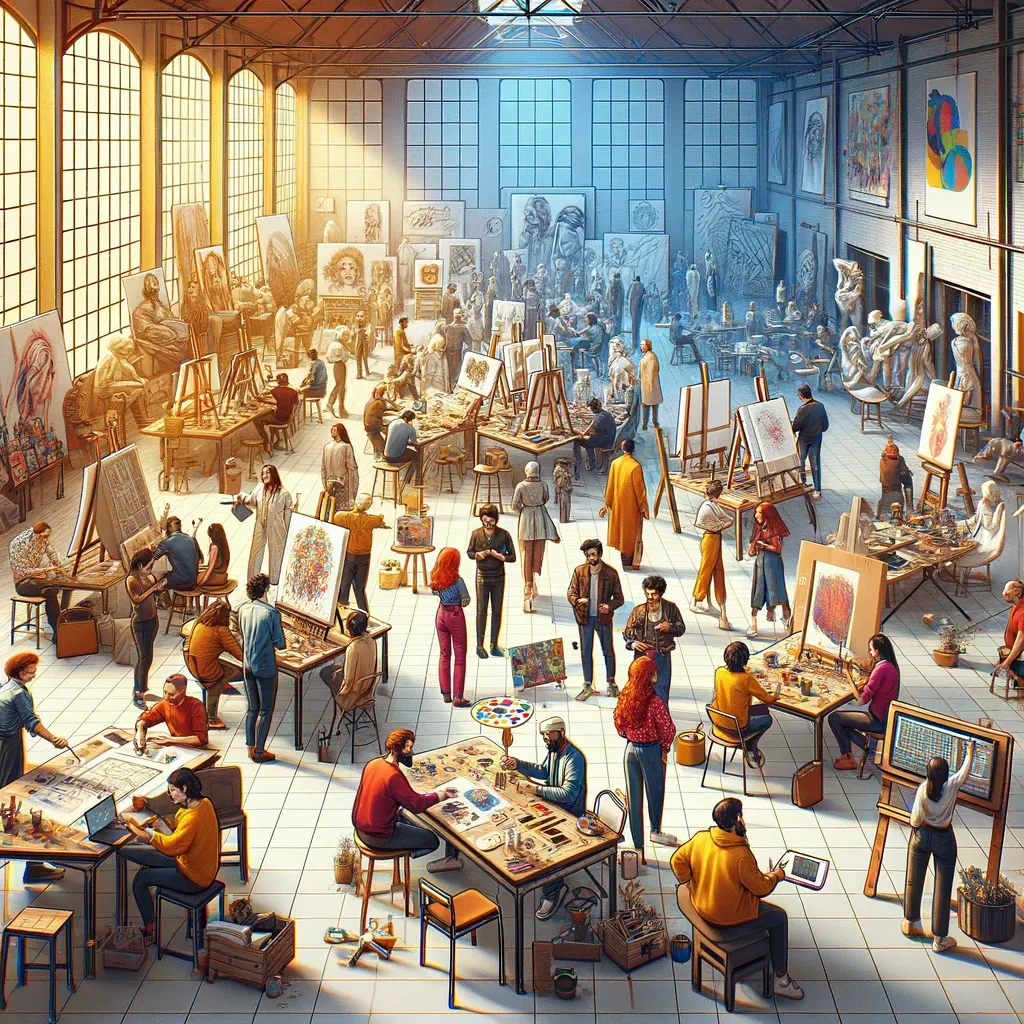 by [dall-e]
by [dall-e]
With a diminished focus on individual branding, collectives of artists with similar visions will collaborate to create unified art experiences. These communal groups will resemble the collectives of Navajo artists before World War II, who did not sign their works until collectors demanded individual recognition. In the context of AI-generated art, these collectives might operate through virtual platforms, allowing for cross-disciplinary collaborations that leverage collective knowledge and creativity. This could push the boundaries of what’s possible with AI in art, mirroring historical art movements and collectives like the Bauhaus or Surrealists, who also emphasized collaborative and interdisciplinary approaches to creativity.
Ethical Considerations
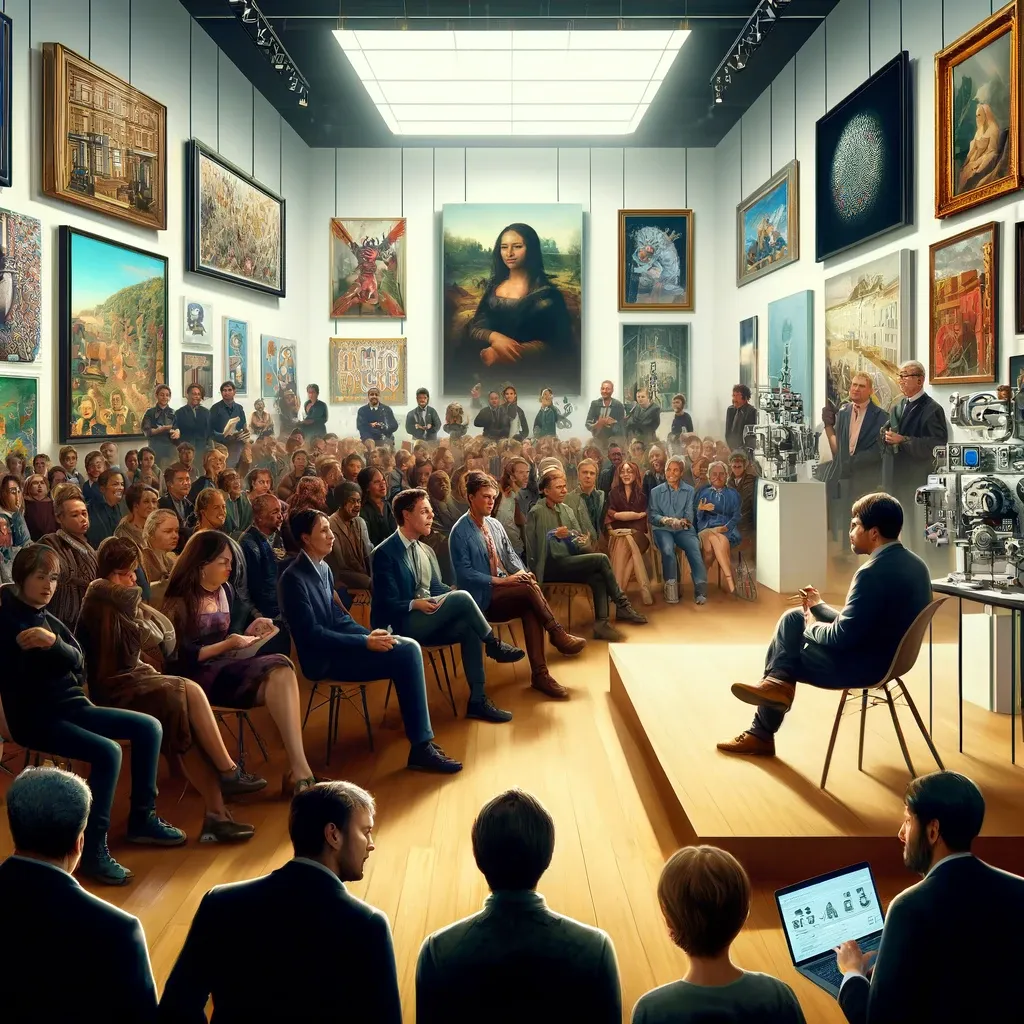 by [dall-e]
by [dall-e]
Traditional artists express concerns about AI models generating works that mimic their style, fearing the erosion of individual creativity and the devaluation of human skill and craftsmanship. Ethical discussions in the art community are focusing on issues of originality, copyright, and the potential for AI to replicate existing styles without proper attribution. It is crucial for the art community and legal systems to adapt to these challenges, ensuring fair compensation and recognition for creators while fostering an environment of innovation and ethical AI use.
One complaint is that artists are finding AI-generated works attributed to them. To combat this, the Partnership on AI is working on indirect disclosure methods for synthetic media transparency, watermarking, fingerprinting and metadata on images to avoid false attribution.
If you wish to avoid having images scraped from your website and used for training models, take a look at Spawning’s opt-out API.
There is a tool named Nightshade that allows artists to convert their images into ‘poisoned’ samples, which could potentially disrupt models during their training phase. However, I believe artists should embrace AI technologies, and thus, I find that such obstructive approaches may not be beneficial.
Future Outlook
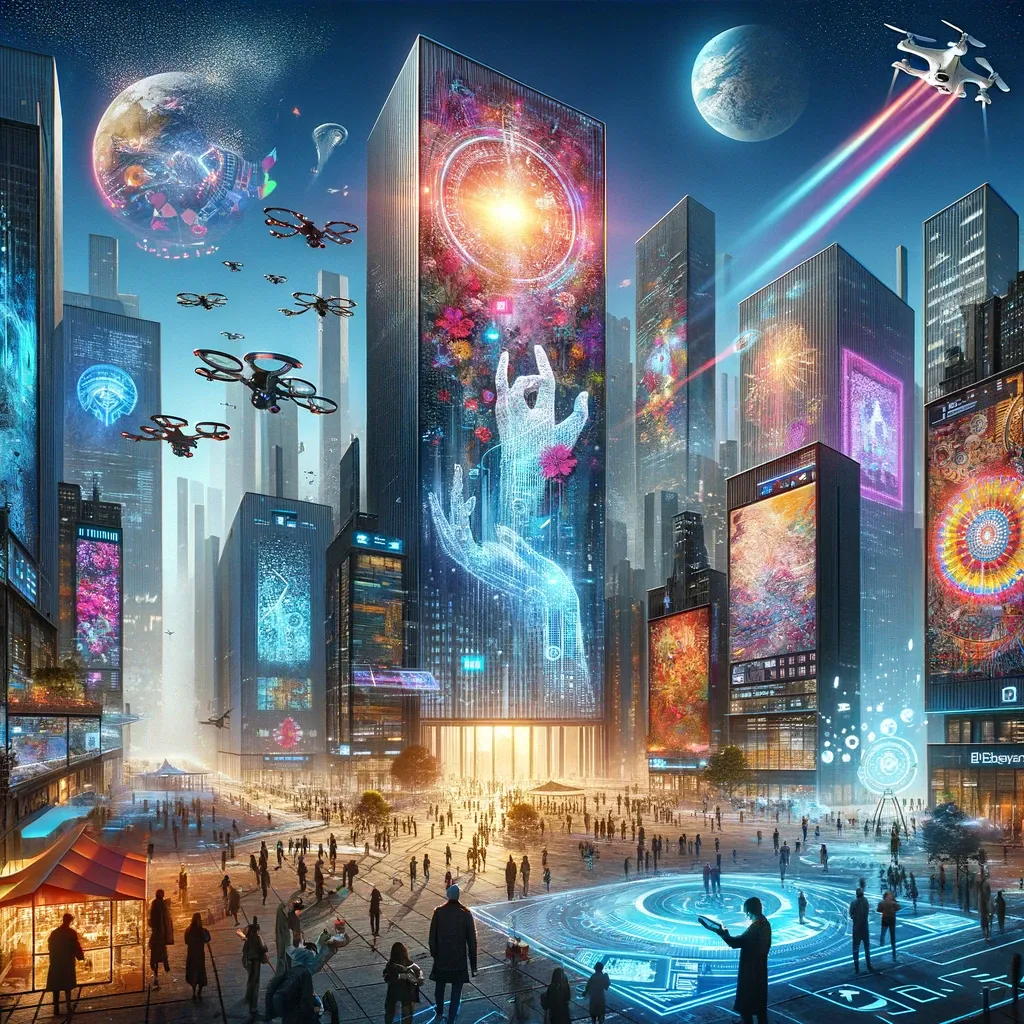 by [dall-e]
by [dall-e]
As AI technology continues to evolve, individuals will not only generate traditional forms of art but also create their own games and metaverses, expanding the canvas of creativity to virtual realms. Emerging technologies like virtual reality, augmented reality, and blockchain will further transform the art world, enabling entirely new forms of art and expression previously unimaginable. This ongoing evolution highlights the dynamic nature of art, continuously reshaped by advancements in technology and the endless creativity of the human spirit.
Co-authored with ChatGPT